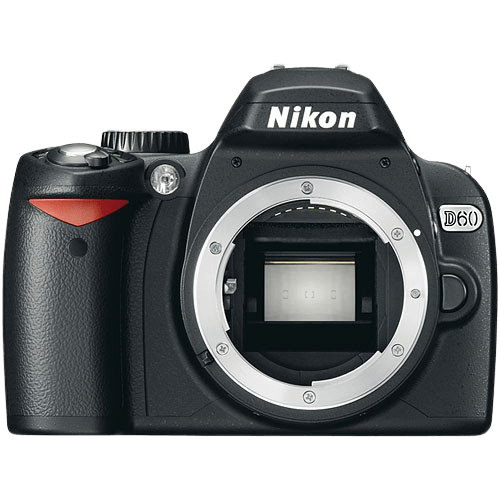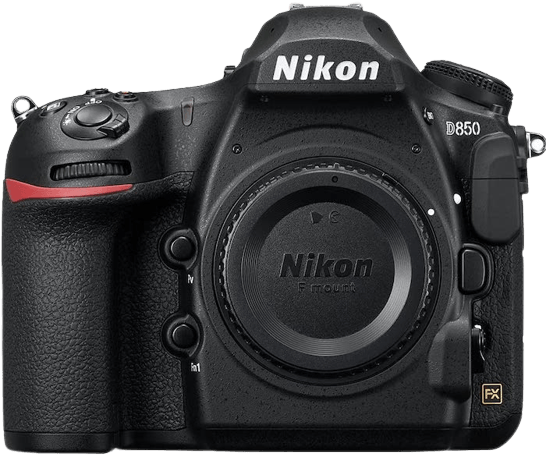Nikon D60 vs D80 Comparison
Nikon D60

Nikon D80

The Nikon D60 and Nikon D80 are both DSLR cameras with a score of 34/100. Released in 2008, the D60 has a launch price of $470, while the D80, released in 2006, was priced at $730. Both cameras share similarities in their design and functionality. They have the same score and are both DSLR cameras.
The D60 is a lighter and more compact camera, measuring 126 x 94 x 64mm and weighing 522g. This makes it easier to carry around and handle during photography sessions. On the other hand, the D80 measures 132 x 103 x 77mm and weighs 668g, making it slightly larger and heavier than the D60.
Despite its age, the D80’s higher launch price suggests that it may have had more advanced features or better build quality when it was first released. However, the equal scores indicate that both cameras offer similar performance and capabilities.
Taking all factors into consideration, the Nikon D60 is a more portable and affordable option, while the Nikon D80 may have had an edge in features at the time of its release. Ultimately, the choice between the two cameras depends on personal preferences and priorities.
Nikon D60 vs D80 Overview and Optics
The Nikon D60 comes out on top in our optics comparison with a score of 43/100, while the Nikon D80 scores slightly lower at 39/100. Both cameras share a number of specifications, including a CCD sensor type, APS-C sensor size, Nikon F DX lens mount, and a lack of image stabilization. Additionally, both cameras have a shooting speed of 3 frames per second.
The D60’s higher score is due to its 10.2 megapixels, compared to the D80’s 10 megapixels, and its Expeed processor, which is an improvement over the D80’s Nikon Image processing engine. Furthermore, the D60 has a higher DXOMARK score for the sensor at 65, while the D80 scores at 61. These factors contribute to the D60’s better performance in terms of image quality and processing capabilities.
On the other hand, the D80 does not have any significant advantages over the D60 in the optics department. Both cameras share many similarities, and the differences in specifications are minimal. The D80’s lower score is mainly because of its older image processing engine and slightly lower megapixel count.
Taking all these factors into consideration, the Nikon D60 is the superior camera in terms of optics. Its higher megapixel count, better processor, and higher DXOMARK sensor score make it the better choice for those seeking improved image quality and processing capabilities. While the Nikon D80 is not a bad option, the D60’s advantages make it the clear winner in this comparison.
Nikon D60 vs D80 Video Performance
Moving on to the video capabilities of the Nikon D60 and Nikon D80, it is important to note that neither camera has video functionality. As a result, there is no video score to compare between these two cameras. Their respective strengths lie in their photography features and not in video recording.
Nikon D60 vs D80 Features and Benefits
The Nikon D60 and Nikon D80 both have a feature score of 17/100, making them equal in this category. They share several common specifications, including a 2.5-inch screen size, a screen resolution of 230,000 dots, and the absence of a touchscreen, flip screen, GPS, and Bluetooth.
Despite the identical scores, the Nikon D80 has an advantage over the D60 due to its Wi-Fi capability. This feature allows users to transfer photos wirelessly and remotely control the camera, providing additional convenience and flexibility in various shooting situations. The presence of Wi-Fi in the D80 is a significant advantage over the D60, which lacks this feature.
On the other hand, there are no specific areas where the Nikon D60 outperforms the D80, as both cameras share most of their specifications. In this case, the D60 does not have any advantages over the D80.
Taking these points into account, the Nikon D80 is a better choice for those who value the convenience of Wi-Fi connectivity, giving it an edge over the Nikon D60. However, it is essential to consider that both cameras have the same feature score and share many specifications, making them equally suitable for users who do not prioritize Wi-Fi functionality. The Nikon D60 and D80 are comparable cameras, but the presence of Wi-Fi in the D80 makes it a more convenient option for some users.
Nikon D60 vs D80 Storage and Battery
The Nikon D80 outperforms the Nikon D60 in storage and battery with a score of 53/100, while the D60 scores 27/100. Both cameras have one memory card slot and accept SD, SDHC, and MMC cards. However, the D80 has a significantly better battery life and a different battery type.
The Nikon D80’s battery life lasts for 2700 shots, using the EN-EL3e battery. This longer battery life makes the D80 more suitable for extended shooting sessions or situations where charging is not readily available. On the other hand, the Nikon D60’s battery life is limited to 500 shots, using the EN-EL9 battery.
The Nikon D60 does not have any advantages over the D80 in terms of storage and battery. Both cameras lack USB charging, which could be a drawback for users who prefer this option.
Considering the storage and battery aspects, the Nikon D80 is the better choice, offering a significantly longer battery life. The Nikon D60 falls short in this category, making it less suitable for extended use without access to charging facilities.
Nikon D60 vs D80 – Our Verdict
Are you still undecided about which camera is right for you? Have a look at these popular comparisons that feature the Nikon D60 or the Nikon D80:

